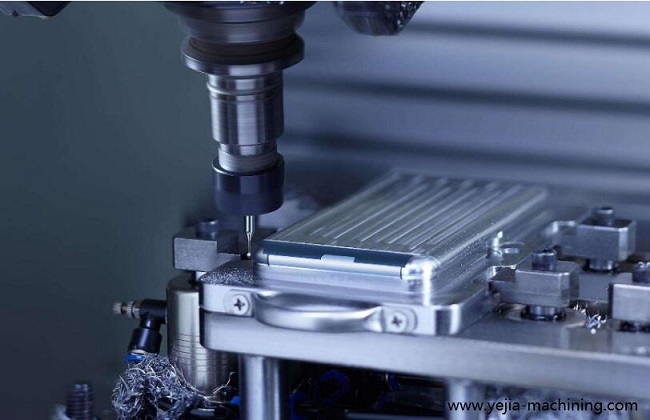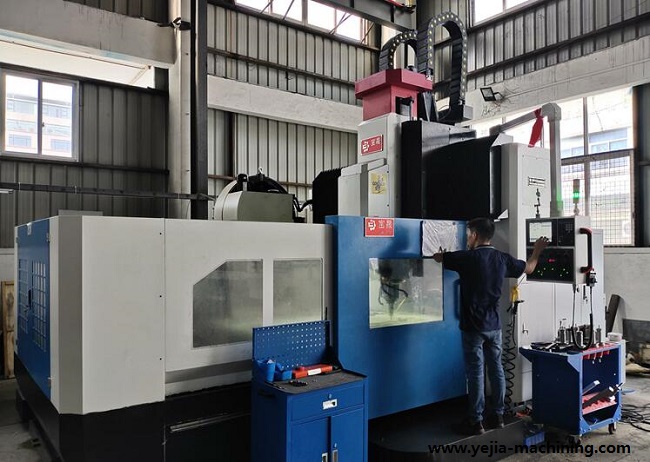
The most dangerous time for CNC users is when the cutting tool approaches for the first time. Consistent programming of rapid approach motions is one way to improve CNC safety.
Security concerns directly impact the productivity of any CNC machining environment. Optimal productivity can only be achieved when G-code programs run safely in all three ways.
First, programs must ensure that operators are working in a safe environment.
Second, programs must ensure that the machine tools, workholding devices and cutting tools are not stressed or damaged.
And third, programs must machine an acceptable workpiece. Injured operators or damaged machines and components/parts can result in productivity-killing downtime. Scrapping machined parts results in wasted time. These all results in higher operating costs.

There are many safety-related actions that G-code programs must follow, as well as certain things they must not do. Below are five recommendations designed to ensure the safety of CNC people and machines, while facilitating the machining of high-quality workpieces ( milled parts and turned parts).
1. Avoid overly aggressive cutting conditions and insufficient workholding and support
While these issues may not be directly related to G-code programs, they are a function of the process used to create the program. The machining pressure caused by the machining operation dynamics must not exceed the ability of the machine or workholding device to handle the programmed machining operation.
2. Don’t allow a bar to hang out from the spindle
This question is also more about applications and process than it is to G-code programming. Many companies use bar feeders to machine multiple workpieces from a long bar. Indeed, bar feeding is a common application for CNC lathes. With a bar feeder, the long bar (possibly up to 15 feet (5 m)) is completely enclosed in the bar feeder. This provides adequate support for the bar.
Some companies do not have many bar feeding applications. When they do come across a bar feeding job, they instead use a bar puller. A special tool in the turret is used to pull the bar during the bar "feed". Using these applications, make sure the bar never extends past the spindle end at the back of the machine. If it does, even by a small amount, hanging out sections will not be supported. When the spindle is accelerated to machining speed, the internal pressure in the bar will cause it to bend instantly to ninety degrees at the spindle. This bent over portion of the bar may shear from the bar and be thrown into the shop area. Or it may remain attached. But either way, it will likely cause serious damage to the machine and injuries to people that happens to be in the area.
3. Use M code for rotary axis clamping
Most rotary axes include a clamp that can be used during powerful machining operations. Once in position, if the clamp (usually commanded with an M-code) is not engaged, the rotary axis components (drive motor, worm gear, etc.) will bear the full stress of the machining operation. Over time, this will cause the related components to wear out prematurely. For any machine that has a rotary axis (for example, a mill or lathe), find out if it has a clamp and, if so, which M codes are involved.
4.Watch hand of cutting tools for turning centers
This will not be a problem for those who run free-machining materials (such as aluminum or wax) or perform shallow cuts (such as finishing operations). For aggressive operations (such as rough boring, turning, or facing), be sure to use a tool hand that allows the force of the machining operation to be absorbed by the machine bed and rail system, otherwise the machining operation force will tend to pull the machine components apart, causing play in the way systems. Over time, the machine will develop chatter and size issues.
5. Ensure a safe and fast approach motion
The most dangerous time for CNC users is when the tool is first approached. It will move very close to the work surface at the fast speed of the machine. Most programmers use a fast approach distance of 0.1 inches (about 2.5 mm)—some even closer.
First, make sure the CNC people know how to control the fast approach moment. This usually involves using a single block, feed hold, quick override (or possibly dry run) and the distance-to-go screen. By one means or another, the setup people and operators must have a way to get the machine to crawl during each tool's first approach to the work surface.
Also, be consistent when programming fast approach motions so setup people and operators will always know how the machine will approach. For machining centers, I recommend first moving the tool into position in the x and y axis. Then approach in the z axis. This way, there is only one axis to deal with. Also, initially position the cutting tool 1.0" (25.0 mm) above the work surface. Then position it to the work surface. When in single block mode, the operator can then rest assured, knowing the tool will stop an inch above the work surface.
Even with these recommendations, CNC users must be vigilant in identifying potential problems. Use past experience as a guide; consider the security issues the company has encountered over the years and consider whether acceptable remedies have been employed. Of course, whenever an accident occurs, take action to make sure it doesn't happen again.








